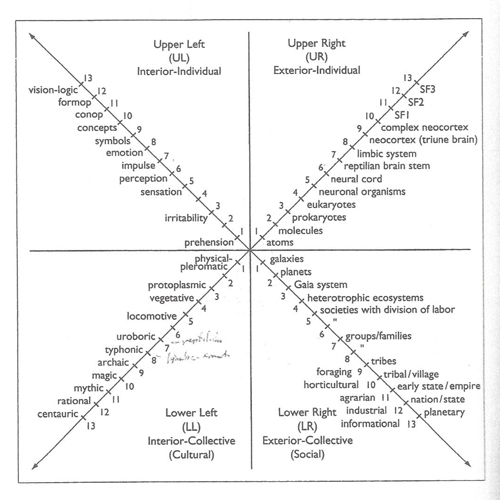New Hope for Head Injuries
If you have had a head injury, or what medicine calls a “traumatic brain injury” (or TBI), medicine has had very little to offer you in the way of treatments to improve your chances of recovery…until now. Newer understanding of what goes on inside your brain and its blood vessels when it gets injured has led to the development of some very effective Functional Medicine and Physical Medicine treatments.
Normally, your brain is kept in a much protected, pampered environment. It is covered with a fine, delicate membrane closely applied to all of its convoluted surfaces, floating in a very specific fluid, called cerebrospinal fluid, and encased by a tough fibrous membrane that lines the inside of a hard, boney box called your skull. Even the blood vessels in your brain have a special lining to them that only lets in what the brain needs and keeps everything else out, especially the body’s inflammatory process. This is called the blood-brain barrier (BBB). Tensions in the membranes around the brain or restrictions in the bones of the skull can have a big influence on how the brain works.
When you hit your head, whole cascades of changes start happening. Like shoes in a shoebox when you shake it, the brain can slosh around inside the skull and bang up against the hard, bony barrier, bruising the delicate tissues. The BBB gets disrupted and inflammation can start to develop in the brain. This further breaks down the BBB and a vicious cycle gets started. This is why some people can have more brain dysfunction a month or two after a head injury than right away. It also slows recovery. With repetition and over time, these changes can lead to chronic traumatic encephalopathy (CTE).
To effectively treat head injuries and post-concussion syndrome, the injured brain needs to heal, the BBB needs to be re-established, and the tensions and restrictions in the membranes and bones need to be released. Ideally, it all needs to happen at the same time. A combination of functional medicine and Cranio-Sacral therapy can do this.
Jack was a ten year old boy who hit his head during a car accident two months before I first saw him. He was referred to me by his physiatrist because he continued to have a headache and double vision to the point where he couldn’t read to do his school work. The physiatrist had him on an excellent functional medicine protocol for head injuries that helped his memory, but the headache and double vision persisted. The optometrist was wanting to fit him with prism glasses but the physiatrist and his mother wanted to try a course of Cranio-Sacral treatment (CST) first.
We did have a working hypothesis to explain his double vision. There is a double-layered membrane inside the skull that separates your cerebrum from your cerebellum. It forms a kind of trampoline for the back half of your cerebrum to sit on. Three cranial nerves run the muscles that move your eyes. As you can imagine, their movement must be very precisely coordinated in order for your eyes to track together correctly. These three nerves come out of the brain stem and run a short distance between the two layers of the tentorium before entering the back of the eye socket on their way to their muscles. Abnormal tension in the tentorium can affect these nerves, disrupting their fine coordination and leading to eye tracking problems. Anyone with eye tracking problems deserves a good Cranio-Sacral evaluation.
After his third CST treatment, his double vision resolved and he was able to read again. His headache localized to a place in his right temple where several sutures of the cranial bones come together. Another three CST sessions got all of them freed up and his headache also resolved. Incidentally, his older sister had had four concussions over the past few years and was just living with a constant, dull headache. One session of CST resolved her headache.
Traumatic brain injury (TBI), is a big problem in the US. In 2013, there were about 2.8 million emergency room visits, hospitalizations and deaths due to TBI (https://www.cdc.gov/traumaticbraininjury/index.html). Falls, moving vehicle accidents, and sports injuries were the most common causes. Sadly, in children under 4 years old, assaults are the leading cause of TBIs. TBIs can range from very mild, with no long-term adverse effects, to fatal. The more severe the TBI, the more likelihood of long term effects such as memory loss, emotional swings, learning problems, headaches, dizziness, sensitivity to light and sounds, neurological deficits, and such.
Most medical treatment of TBI is focused on treating the symptoms caused by it (http://www.msktc.org/tbi/factsheets/Emotional-Problems-After-Traumatic-Brain-Injury), but this new approach works to heal the brain and BBB so the symptoms just naturally resolve. Not all brain injury is traumatic (https://www.psychologytoday.com/blog/professor-cromer-learns-read/201203/after-brain-injury-the-dark-side-personality-change-part-i), and not all brain injury can be healed, so having these coping and supporting treatments can come in handy (https://www.brainline.org/people-with-TBI), but more healing is possible than we, as a society, are accessing.
Just learning to cope with the long-term changes caused by TBI isn’t your only option anymore. There is now much more hope for healing from concussions and other head injuries than the medical literature would lead you to believe. Anyone who has experienced a head injury or concussion deserves a good CST evaluation and functional medical support. This combined approach can help speed brain healing and decrease the number of long-term adverse effects of TBI (personal clinical experience). I now offer this complete service in my practice.
The combination of specific functional medicine concepts with Cranio-Sacral therapy can give you the best chance for healing. If you have had any head injuries and you suspect you may still be experiencing any effects from them, there is new hope. Please come in for an evaluation. If you know anyone who has had a head injury, spread the hope: please pass this along to them. I appreciate the chance to help them, too.




